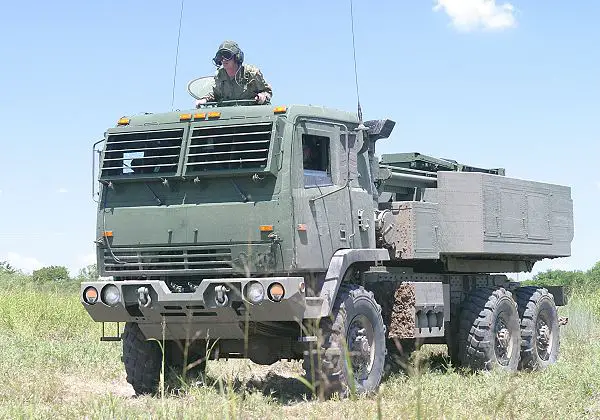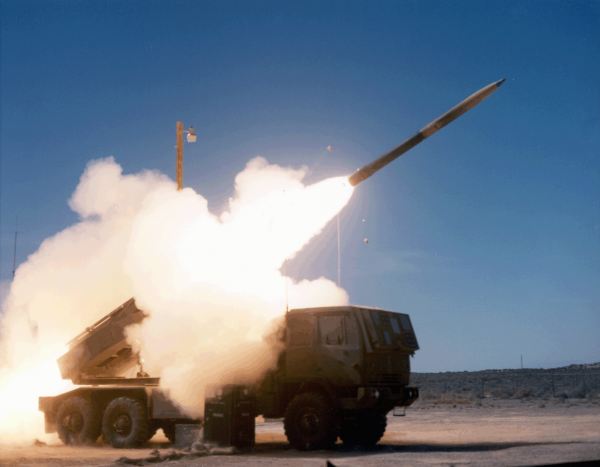The test was conducted in two parts,
the first part being the pair of launchers deploying from
the C-17. After firing, the pair of launchers were loaded
back onto the C-17 and flown away to clear the area for
the C-130 to land and repeat the process with the single
launcher it had on board.
The
HIMARS
is a truck mounted version of the Multiple Launch Rocket
System, or MLRS. Able to carry all of the same rocket and
missile payloads as the tracked vehicle based MLRS, the
HIMARS
benefits from additional mobility allowing it to keep up
with lighter units than the MLRS
"One
of the things the Army learned long ago was tracks go with
tracks and wheels go with wheels. The HIMARS
on a five ton truck derivative is more aligned with
our light forces," Paul said.
The test leveraged the HIMARS'
lightweight and high mobility and coupled it with the ubiquitous
nature of the C-17 and C-130, two of the Air Force's most
common and versatile transport aircraft.
"What
it does is, it merges existing capabilities between the
Army and the Air force," said Paul.
This
test was the capstone event for the project, and represents
years of work by both the service members and civilians
working on improving the system.
"It's
a culmination of many years of work of the product office,
the end user community at Fort Sill Oklahoma, and many of
our teammates," Paul said.
Since
the upgraded navigation and targeting systems are so vital
to mission of providing accurate artillery missile and rocket
strikes, extensive work had to be done to ensure the systems
were up to the challenge.
"We've
gone through quite a bit of testing. The genesis of this
project was almost five years ago. It's something that's
been on the drawing board that we've worked with the precision
fires project office for quite some time," said Matthew
Berger director of MLRS launchers for Lockheed Martin Missiles
and Fire Control.
|

